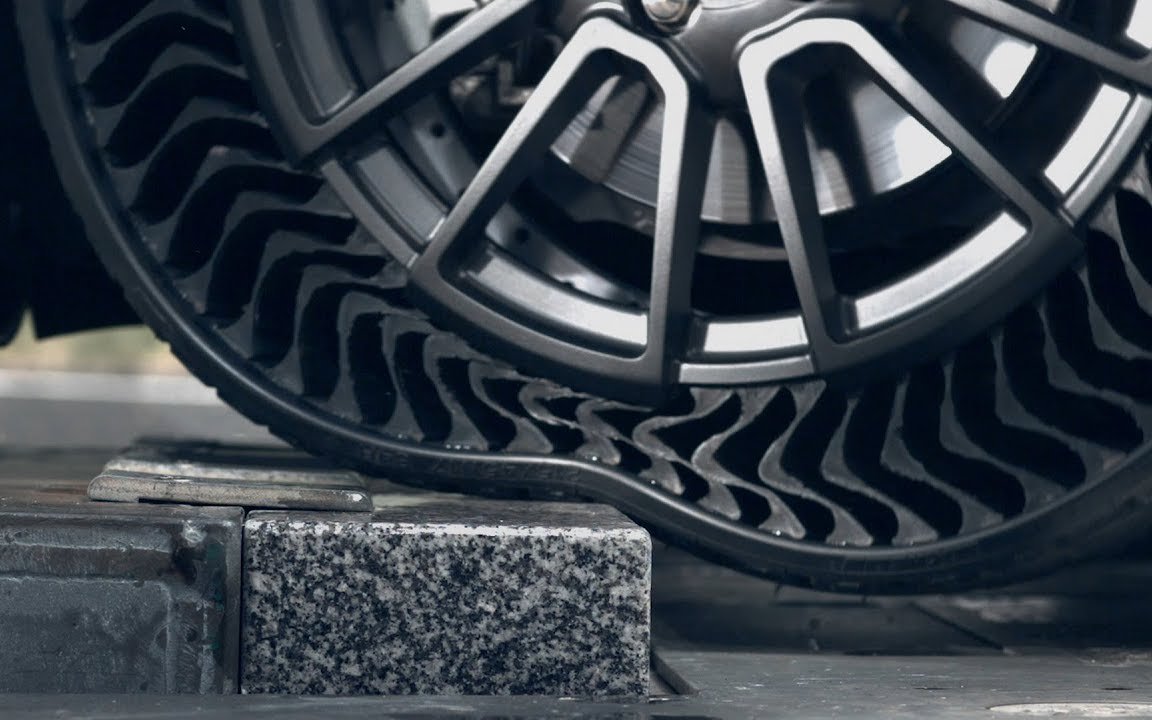
Editorial
Could the Michelin UPTIS Airless Tire Work In MTB?
Puncture prevention has come a long way in recent years. Most riders have ditched tubes and you’d be hard-pressed to find anyone who dislikes the move—despite the messy but necessary evil that is sealant. Beyond flat prevention, inserts can improve ride quality and prevent rim and tire damage. Even with these developments I often find myself thinking there has to be something better.
Most days of the week I disappear into the bush to walk my dogs. They love their time out in the wild and I enjoy disconnecting from the world around me. I plod along more often than not oblivious to the world. During these moments I find myself thinking about how things work and how they could be improved. Tires have been the subject for many of these sessions but the best 'solution' I've had is to somehow integrate an insert within a tire. Brilliant, I know.
But I’m no mad scientist or engineer. From a practical perspective, I understand how things work pretty well, but to develop something technical in my mind and understand how to realize it… Uh uh. Thankfully there are heaps of people capable of conceptualizing and producing new tire systems, and the folks at Michelin fit that description. The most recent fruit of this labour is the just released UPTIS automotive tire.
Michelin's new UPTIS Airless Tire
The UPTIS tire (Unique Puncture-proof Tire System) is supported by an internal system of flexible rubber sections rather than air. Michelin claims the system lasts longer and can save 2M tons of wasted material every year. A similar innovation called Tweel is used on skid-steers/Bobcats, legitimizing the system's off road durability. But even before seeing that, the concept smacked me in the face. This is it! If bike tires eventually go down this route flats would be a thing of the past.
Then while excitedly discussing it with a close friend who knows cars far better than I, he made me aware of the Energy Return Wheel by BriTek. Why haven’t I heard more about this? Has the concept not been proven yet? Are there any out in the wild? Maybe it’s a problem with their rubber compounds, or is it the price? The more I dug, the more I realized this isn’t anything new, but Michelin is pushing the technology into the mainstream, claiming this system will be standard on some passenger vehicles by 2024.
Michelin's Tweel Airless Tire
UPTIS technology is still in its conceptual stage and while very cool, there are some issues to be dealt with before it revolutionizes mountain biking. Firstly, rocks and other debris could collect in the open cavities of the tire, compromising the flexible ‘spokes’ that support the tread making damage to wheel and tire a real possibility. And while ATVs and Razors use this system, they have throttles to combat any potential increased drag.

From left to right, an airless insert from Schwalbe, Vittoria's low air volume insert and another airless from Tannus, followed by the Tannus hybrid insert system we tested earlier this year.
There’s also only a very flat profile with UPTIS and the Britek ERW appears similar. Without knowing how the system reacts to loading one side of the tire it's only possible to speculate, but I wonder how it would replicate the cornering traits of our favourite modern mountain bike tires. Tire pressure is highly personal and many riders adjust PSI to suit the terrain. Britek claims to custom tune their system to a rider's preference but that doesn’t allow for terrain specific adjustments.
Is this the future of bike tire technology? It's hard to say, but I am a huge fan of removing air in exchange for never dealing with another flat. Or maybe I’m more interested in being guaranteed no more flats while still using air? I reckon that’s it but removing air from the equation seems like a sure-fire way of achieving that.
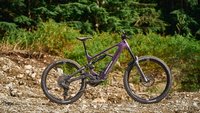
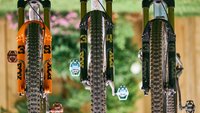


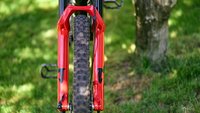
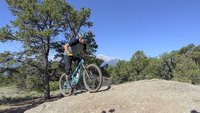
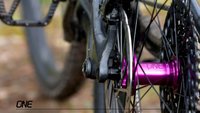
Comments
WheelNut
5 years ago
The big problem with these airless systems is that they are extremely inefficient. The compressed air in your tire supports the tread and provides a spring with the hysteresis (internal flexing friction) losses of the tread and sidewall being the main resistance. This loss is VERY minimal and it is the reason we haven't yet replaced pneumatic tires with some other system for over 100 years. The fact that the tire is an air spring is also a valuable tuning tool to alter the feel and traction of the bike without changing parts. Also, it turns out air is much lighter than any plastic/rubber spring. People have been experimenting with airless tires that conform to the ground for a long time and they just don't work better than pneumatic tires.
Reply
Timer
5 years ago
If we see this in MTB, it will probably be for E-Bikes / Gravity sleds. The weight is a real killer, especially if the cavities fill up with dirt.
Reply
Vik Banerjee
5 years ago
Shouldn't be a problem only a few hold outs will still be human powered MTBing in 5-10 years so we might as well kill flats and just amp up the HP of the motor/battery.
Reply
ninjichor
5 years ago
Speaking of which, why are the spaces between knobs filled in the first place on these? Isn't that a relic of tubed tires?
Reply
Lma
5 years ago
The Vittoria insert above (airliner) is not an airless system ;) just a regular tubeless insert.
Reply
AJ Barlas
5 years ago
Yep. I don’t know how that got in there.
Reply
Cam McRae
5 years ago
My bad. Should have said low volume for Vittoria.
Reply
grcgrc
5 years ago
The Britek promo was all in a mostly straight line, riding on mostly level terrain. Nothing at speed, no significant corners, nothing to stress their system.
I will need to see more varied terrain before being convinced.
Reply
AJ Barlas
5 years ago
Absolutely. There doesn't appear to be anything convincing on that system yet.
Reply
Cam McRae
5 years ago
He also seems to be a roadie riding on dirt. And every demo of the system dropped - and sometimes even ridden - shows the wheel bounce highlighting the absence of damping. I'm pretty sure bouncing is to be avoided.
Reply
Andy Eunson
5 years ago
Michelin has a flexible rim as well. https://youtu.be/5rN8zQAoJnA
Reply
Zapp
5 years ago
I mean why stop there? Titanium wheels are the future.
https://phys.org/news/2017-11-mars-rover-wheels-wont-torn.html
Reply
Please log in to leave a comment.